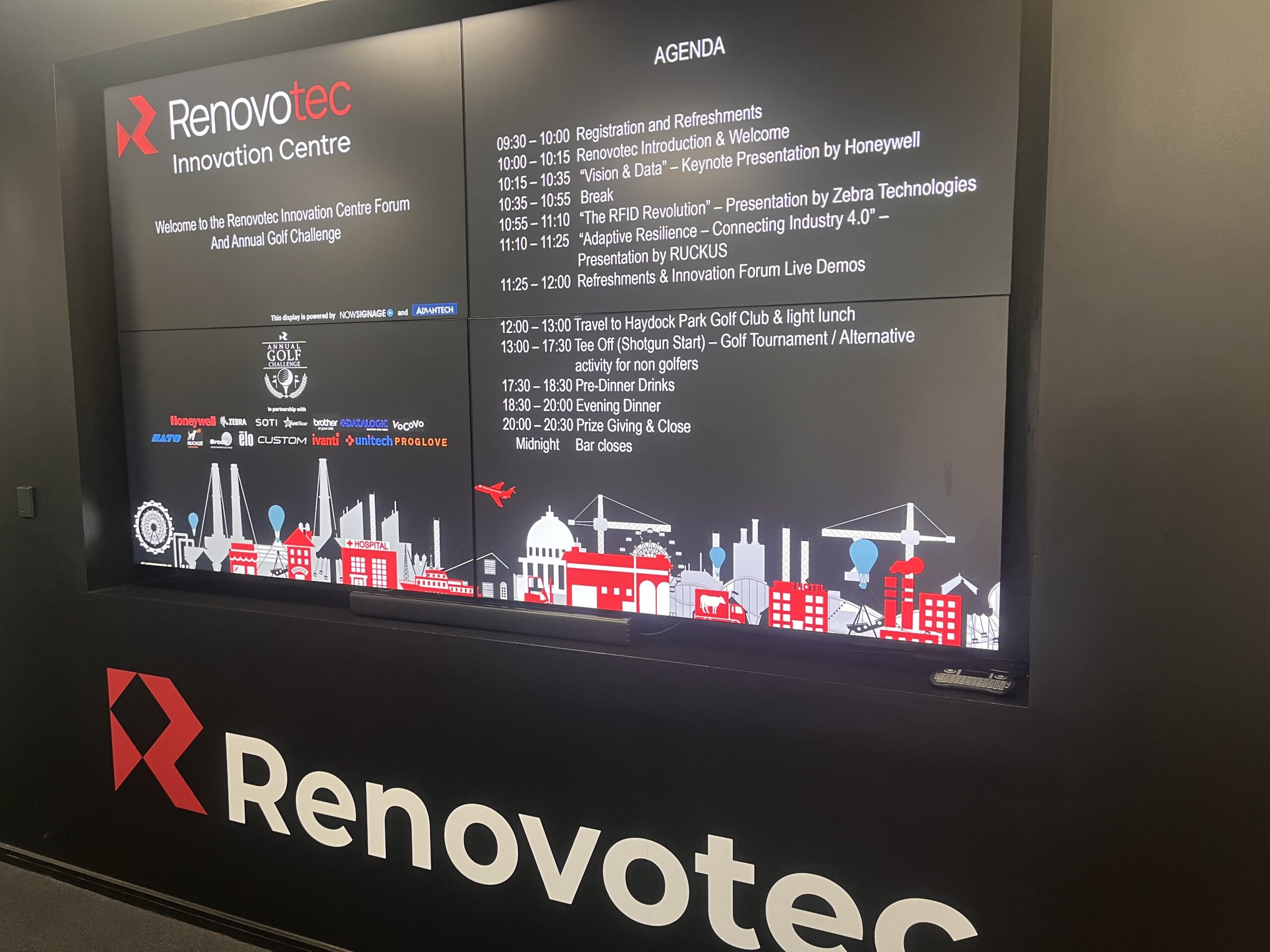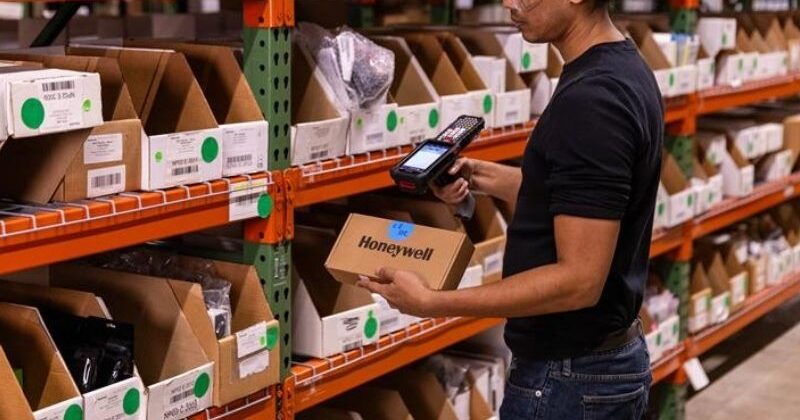

How Modernising Your Warehouse Technology Enhances Productivity and Saves You Money
In warehousing, efficiency is everything. Every second shaved off your processes translates to productivity savings and bottom-line gains.
The explosion in online shopping has placed ever greater demands on the supply chain, and the drive to do more with less is top of the agenda for warehouse operators. For those who are still using older ‘brick-on-a-stick’ technology, there is a significant opportunity to drive productivity and ROI by switching up to newer devices. Far from simply a ‘nice to have’, today’s advanced warehouse technology is an investment that delivers a significant return.
Changing up – The benefits of Android
Legacy, Windows-based mobile devices, not only expose you to the security risks of an unsupported operating system (OS), but their slower speeds, shorter battery life and lower memory put the brakes on supply chain operations, no matter how good your staff. Moving to enterprise mobility devices opens a world of productivity gains and delivers impactful ROI from your warehouse technology.
Operational benefits:
- Fewer Hardware Devices – Unlike ‘one device, one app’ legacy systems, modern Android devices can run multiple apps on a single device. So, alongside the Warehouse Management System (WMS), your staff can access, for example, email, leave requests, push to talk communication apps and safety checklists. This convergence of warehouse technology reduces the need for separate devices. This reduces the number of devices users need to carry and access. Thus, making them more efficient and cost effective.
- Productivity – The single device eliminates staff having to go backwards and forwards to check safety procedures or access their email. As they don’t have to switch between mobility devices and radio. Hence, they spend more time on the warehouse floor doing their core job, increasing productivity.
- Health and Safety – For example. by digitising a forklift safety checklist, and making it available on the same device that your operator uses for scanning, it’s more likely to be checked and mishaps avoided.
User benefits:
- Process Efficiency – Processes such as reporting damaged goods are time consuming with older tech. An Android device with a camera streamlines the process. Which means your staff can manage the entire workflow end-to-end from a single device. Saving time and money.
- Faster Training & Better Operator Experience – Today’s warehouse workers, especially millennials, use touchscreen tech every day. Giving them this familiar interface for their work device makes for faster training and a better operator experience.
- Future Ready – Warehouse technology is advancing at a rapid pace. But legacy mobility devices simply can’t take advantage of todays and tomorrow’s functionality. This includes 2D scanning, Near Field Communication (NFC), wearable devices and voice picking systems. Even if you’re not yet ready to implement these advances today, investing in a modern Android platform is a sound future-positioning strategy. Your investment will be protected, and you’ll be able to simply and rapidly implement advanced tech.
Additional features:
- 2D Scanning – Enables data capture from any orientation. Reducing body movement and the risk of injury.
- NFC – Fast and easy ‘tap and pair’ functionality saves time when adding new devices such as mobile printers and accessories.
- Wearable Scanners – Enable faster, safer scanning, with fewer, RSI-inducing repetitive movements and allowing for hands-free picking functions.
- Voice Picking – Voice drives greater efficiency with staff not having to check written picking lists. It is also particularly productive in small case picking and split picking operations.
Next steps
So, you understand the benefits of stepping up to new warehouse tech, but how do you go about it? What are the next steps to ensure you make the right choices and implement a successful project?
Here are the three essential actions to take:
- Modernise your WMS App – If you’re still using green screen tech, the first step is to migrate your app to a touch interface, ready for Android. This process is made simpler if you use a Terminal Emulation (TE) program. It will take your legacy apps and convert them to a modern, Android-ready interface.
- Select Your Devices – Choosing the right mobility technology is key to a successful transition to Android. Modern mobility innovations support Android as an OS, enabling you to introduce more secure, reliable and efficient technologies on a platform designed to support your business operations.
- Select Your Partner – Rolling out a mobile device upgrade requires experience and expertise, and you’ll need to have the right partner to help you design, deploy, manage, and support your new fleet. Selecting an Android Enterprise Approved partner will ensure that your project is in safe hands.
Having the right partner to roll out your mobile device upgrade is essential. Typically, the pain point will be felt most by CIOs and CTOs from an IT perspective, who have registered challenges with their warehouse operations. At Renovotec, our tailored end-to-end warehouse technology solutions are designed with your unique business needs in mind. You can talk to one of our specialists on mobile solutions, rugged or not, here.
This blog post was originally posted on www.skywire.com.au. The post has been edited for clarity and relevance before publication on www.renovotec.com. You can also learn more about our solutions, services and support for the APAC Region.
Related Blog Posts

3rd Annual Innovation Forum and Golf Day
Last week saw the highlight of the Renovotec calendar; our 3rd Annual Innovation Forum and Golf Day.
Hosted at Renovotec’s first of its kind Innovation Centre in Newton-Le-Willows, the morning event brought together the Renovotec team, partners and clients to showcase the latest RFID and logistics tech, hear about the latest trends from Industry experts and experience […]
Retail Experts Share Top E-Commerce and Logistics Trends for 2025
Faki Saadi, Director of Sales UKI at SOTI and Richard Gilliard, Managing Director at Renovotec, explore the key trends shaping the future of the retail supply chain From Asda rolling out electronic shelf labels to Amazon launching ‘Prime Air’ a delivery drone service, retail brands are evolving and looking to the latest technologies to keep […]

Upgrading the supply chain with Honeywell voice and mobility solutions
How can you transform your supply chain operations and ensure competitiveness in the market with voice and mobility solutions from Renovotec and Honeywell?
Improving productivity and efficiency gains are vital for the profitability of businesses in the supply chain.
